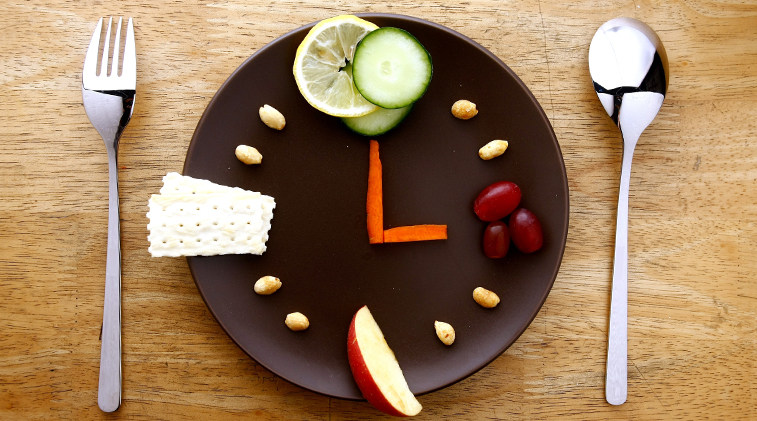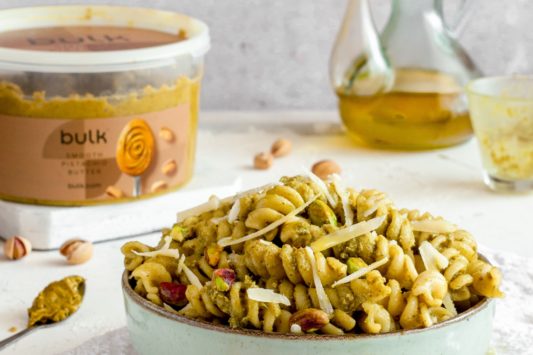There’s a lot of speculation within the fitness and nutrition industry around how many meals you should eat throughout the day and how often you should eat. This article will help you to understand the benefits of high and low frequency meals, meal volumes and food timing effects on metabolism.
Cutting vs Bulking; high or low frequency meals?
Word on the grape vine is that having smaller, more frequent meals is more beneficial for burning fat due to metabolism being raised. However, this method often leaves people feeling unsatisfied with the small portions of food required to be eaten when splitting your total daily calories between 5-6 meals.
If a person’s Total Daily Energy Expenditure (TDEE) is 2500 calories, a deficit of 500 calories should equate roughly to 1lb of fat loss per week, which would be a total of 2000 calories per day and 14,000 per week. Splitting 2000 calories between 6 meals only allows for 333 calories per meal, which is a fairly small amount; you’d be lucky to make 2 slices of peanut butter on toast for that total amount of calories.
As long as you’re eating the correct amount of each macronutrient required to achieve your goal, you can eat as little or as many meals as you like. 2000 calories obtained over 6 meals is just as efficient at burning fat as consuming the same number of calories over just 3 meals. Similarly, if your goal is to build muscle and you’re aiming for a calorie surplus; as long as you’re eating the correct amount of each macronutrient and hitting your total calorie goal, the amount of meals you choose to consume to reach that number is insignificant.
There are benefits to both high and low frequency meals, however they’re subject to individual preference.
Specific Eating Times
In terms of specific times to eat throughout the day, it’s all about being strategic. It’s not mandatory to eat 3 square meals at breakfast, lunch and dinner. Theoretically you could just eat 1 large meal per day containing all of your dietary requirements and you’d achieve the same body composition results compared to eating three meals.
However, being strategic with your meal timings is still important. For instance, if you’re planning on performing exercise, it’s beneficial to eat a meal containing a moderate amount of carbohydrates, and a little protein and fats an hour before. On the other hand, your body will benefit from replenishing its glycogen stores and be able to rebuild muscle post-workout if you consume a high protein and moderate carbohydrate and fats meal within 2 hours of exercising too.
The bottom line is, you should time your meals around your activity and daily working routine. Make sure you’re well-nourished before performing both mental and physical work in order to benefit your performance, and ensure you provide your body with the nutrients it requires following training sessions.
Small, Frequent Meals
In order to help keep you satisfied at the end of meals you should try to consume foods high in volume and low in calories. Salad is a great accompaniment for meals as the calorie content is very low while you can eat large quantities which fill you up. It’s also important to drink at least 2L of water each day.
In terms of effects on the body, having smaller and more frequent meals throughout the day will keep your blood sugar levels fairly linear and allow your body to steadily burn calories throughout the day. Eating more frequently tends to suit people who have more structure to their daily routine and are able to take regular breaks for food, or suffer from headaches as a result of not eating for a few hours.
If small meals aren’t for you, don’t worry. You can still achieve fat loss with larger meals.
Large, Less Frequent Meals
If you were to divide 2000 calories by just 3 meals, a person could consume meals double the size of those you’d be able to when spreading the calories over 6 meals and still achieve the same fat loss results. A meal containing 666kcals would be much more filling and keep you satisfied for longer. As long as you consume the same quantity of calories by the end of the day, the results will be almost identical.
These bigger meals will help to keep you fuller for longer, and there’s nothing stopping you from filling them out even more with higher volume foods that are low in calories!
This option suits those who have less time to take breaks and eat food, and those who have a bigger appetite and struggle to feel satiated after a meal.
One of the only downsides to eating bigger meals is that you’ll be waiting a few hours for your next meal, although this can be very beneficial for those who have a busy schedule and aren’t able to stop frequently to eat.
Take Home Message
As long as you eat the correct number of total calories and meet your macronutrient requirements, you’re free to eat as many or as little meals as you’d like; after all, it’s your diet.
Strategically time your meals to suit your daily structure; pre and post workout meals are beneficial.
ABOUT THE AUTHOR
George Platt (BA, Hons.) is a Personal Trainer, Online Coach and Fitness/Nutrition Writer. George’s passion for physical activity and health developed from a young age after having open heart surgery. You can find out more about George via his website or Instagram: @GeorgePFitness93.




